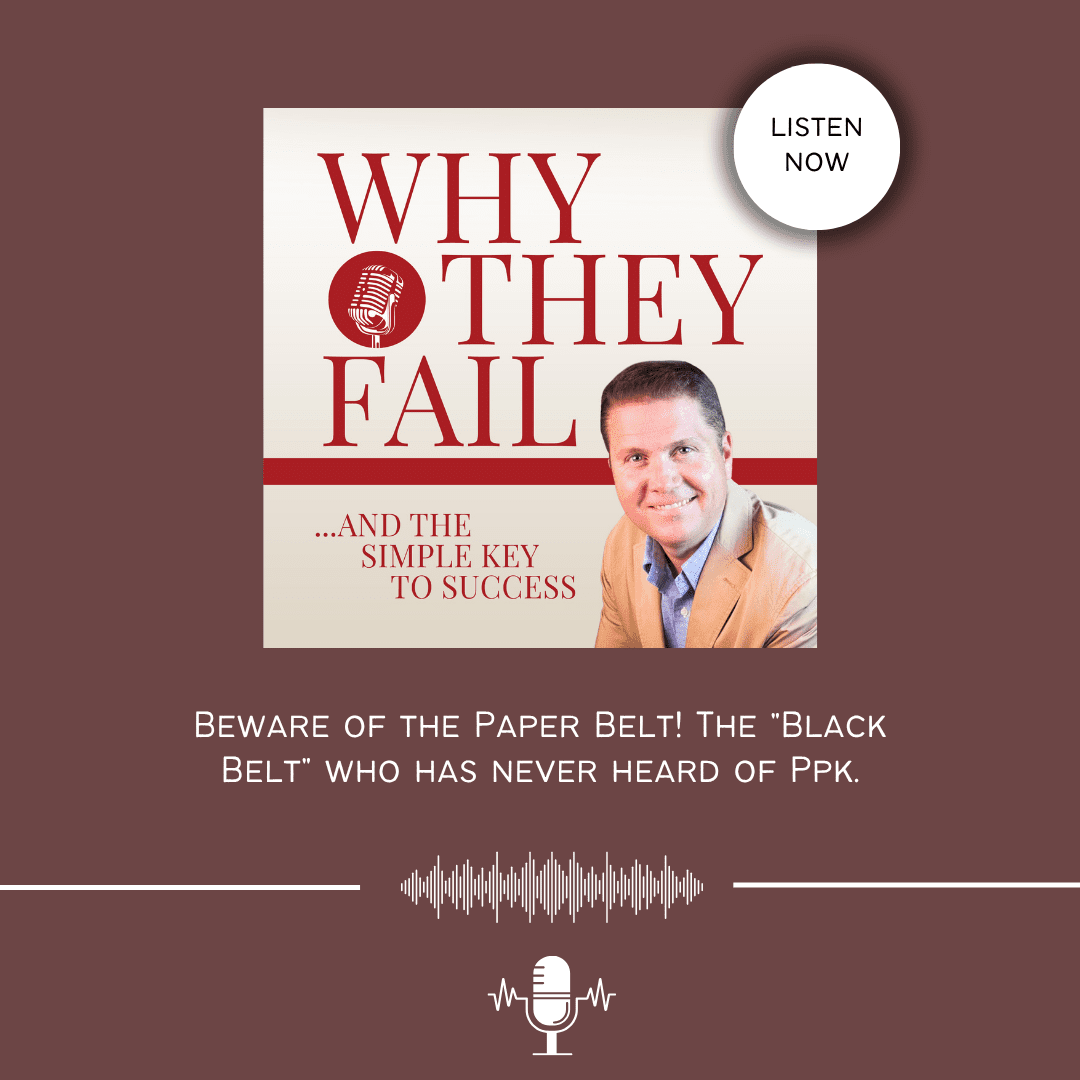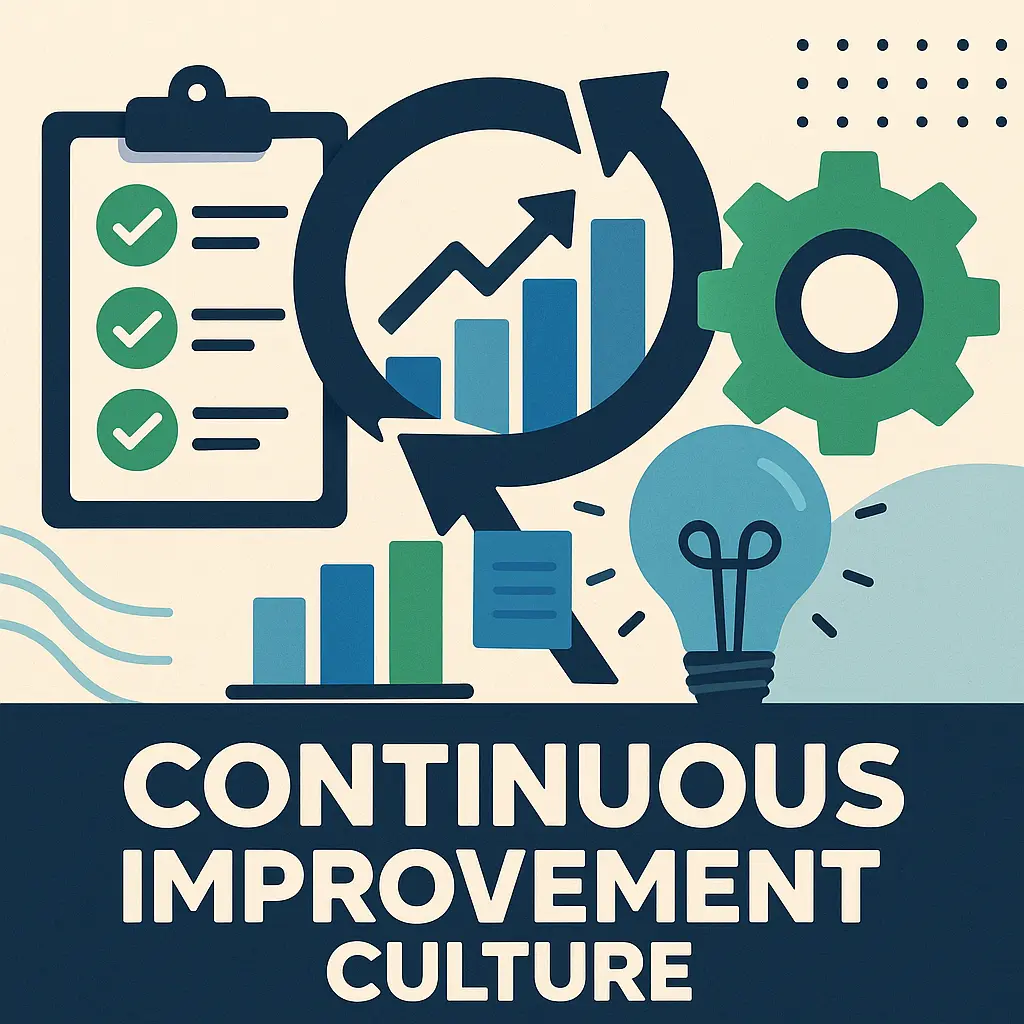Episode Transcript
[00:00:01] Speaker A: Welcome to why they Fail, the podcast that pulls back the curtain on why continuous improvement efforts fail. Buckle up, because we're not here for motivational fluff. We're dissecting the short sighted decisions and leadership agendas that sabotage CI success. But don't worry, we'll clue you in to the few simple keys to success to avoid these pitfalls. If you're ready for the truth, let's do this.
[00:00:35] Speaker B: Welcome to why they Fail, the podcast that picks apart the wreckage of continuous improvement efforts. I'm your host, Kevin Clay, a seasoned, lean Six Sigma Master Black Belt and mentor at Six Sigma Development Solutions. I'm here to tell you the stories of leadership agendas and short sighted decisions that derail CI projects. We're not sugarcoating anything in this podcast. Get ready for a raw, unfiltered look at the reasons why so many continuous improvement efforts fail. But don't worry, this is not a doom and gloom podcast. We are also going to show you the insanely simple key to avoiding these pitfalls and building a phenomenal sustainable CI endeavor. Let's dive in why they Fail and the simple key to success is the podcast where we expose the harsh realities of continuous improvement failures years and give you the blueprint for lasting change. I'm your host and today we're tackling a question that hits close to home for many of us. Is your continuous improvement program just a fad diet for your business?
You know, it's funny how often business initiatives mirror our personal struggles. Think about losing weight. How many of you have bought that treadmill that now serves as a high tech clothes hanger? Or maybe you tried a diet plan that promised instant results only to find yourself back where you started a few weeks later.
It's a common experience, isn't it? We crave that quick fix, that instant transformation. But real change, sustainable change, requires something deeper. A shift in habits.
And here's the continuous improvement efforts in organizations often fall into the exact same trap. In fact, Aerophil Technologies President Pat Bergen in a press release about continuous improvement, stated, out of every 100 companies who undertake this process, 96 either fail or quit within 18 months.
Think about that for a moment. 96%. That's an almost guaranteed failure rate if you don't approach it correctly. It's a sobering statistic, but it highlights a critical point. If you're not changing your fundamental habits as an organization, your continuous improvement program is indeed just another fad diet.
So what are some of these quick fix mentalities that doom continuous improvement initiatives? We've seen them play out countless times. Let's dive into a few common scenarios.
Scenario 1 the Lone Ranger approach. This is where leadership decides to train a single employee or maybe a small group to be the company's go to for improving processes. They're essentially tasked with saving the world and single handedly. I have this conversation almost daily with potential clients. They call, they want to send someone to a green belt course, and when I ask about their infrastructure for sustainability, the answer often boils down to we want Joe to lead our CI department and solve our problems.
What they're really saying is we want one person to take on arbitrary projects based on leadership's agenda in a haphazard attempt to continuously improve.
And let me tell you, when I ask our students in class, how many of you were sent here and are expected to go back and quote, save the world, nine out of ten hands go up.
My heart sinks a little each time because I know they've been set up for failure. They'll learn valuable tools, but without the right support from educated champions, without mentorship from experienced belts and and without the right infrastructure, their impact will be minimal and even worse, unsustainable.
This leads to a few major problems. First, stepping in someone else's sandbox. Imagine a newly trained green belt trying to improve a department whose leader and team aren't educated or bought into the continuous improvement process.
You get turf wars, defensiveness, and ultimately the a demoralized belt and a stalled project.
Second, sub optimization.
When a single belt is expected to fix everything, projects are often identified based on immediate pain points, not on the actual constraint in the overall system. You might solve a small problem, but it won't move the needle for the company as a whole. And finally, trying to solve world hunger.
Leadership without a proper foundation or understanding of how to pick projects often assigns projects that are far too broad in scope, like optimize on time delivery across 2,500 different products.
The belt gets overwhelmed, implements a quick fix that lacks real impact, and the project ultimately fails. It's not the belt's fault, it's the fault of leadership.
Scenario 2 When you expect the plumber to build the house, you wouldn't ask your plumber to build your entire house, right? They're experts at plumbing a crucial part of the house, but they're not general contractors.
Yet in organizations, we frequently see companies tasking a newly trained green belt or black belt with little to no experience to lead a lean six Sigma deployment.
It's like asking a plumber who's not even an experienced plumber to build your house. The result? Projects that take too long go over budget and are eventually abandoned because they don't deliver the expected roi. It truly embodies the saying common sense is not very common.
One clear sign of this trap is when continuous improvement becomes leadership's new toy.
Suddenly, the new CI person is bombarded with projects that aren't about solving existing process problem problems through analysis. Instead, they're tasked with I want projects like installing a new ERP system, moving equipment or managing an expansion. I've even seen CI personnel told to reduce queues in the company's cafeteria because the CEO mentioned it. While critical issues affecting KPIs like on time delivery were ignored, these arbitrary projects chosen by leadership's agenda and and not based on data lead to little to no sustainable effect on the company's profit. And guess what happens then? The continuous improvement efforts lose focus and fail within 12 to 18 months. Blamed on the methodology or the belt when the real culprit is leadership's misuse of their new toy.
So what's the solution to avoiding these common pitfalls? It's simple, but not always easy. You must avoid the quick fix mentality. Instead, you need to build a strong foundation for your continuous improvement efforts. This isn't about finding a magic bullet, it's about a fundamental shift in how your company operates.
At Six Sigma Development Solutions, we emphasize seven critical steps to build this sustainable foundation.
First, building the plan.
Just like you wouldn't build a house without a detailed blueprint, you need a comprehensive pre deployment plan for your Lean Six Sigma initiative, outlining short term and long term goals, KPIs, key participants and a project hopper.
Second, formal buy in from company leadership. This isn't just lip service, it's the cornerstone of the foundation. If leaders aren't engaged, supportive and accountable, turf wars will erupt and projects will be roadblocked, ultimately leading to failure. They need to be educated on their roles and understand that continuous improvement projects are prioritized based on company metrics, not personal agendas.
Third, identifying the continuous improvement deployment owner. This person isn't the head problem solver, but rather the manager of change, ensuring everyone is aligned and working towards common goals.
Fourth, a concrete understanding of site, departmental and organizational KPIs across the entire company. This is perhaps the most vital step. Most organizations fail here, picking arbitrary projects based on pain instead of prioritizing them by their effect on key performance indicators. Without clear, well defined KPIs, how can you know what to improve or what the most important projects are for success Fifth, training champions to be the project managers and cheerleaders. These are your bulldozers removing roadblocks for your change agents. These champions are your cheerleaders, consistently promoting Lean Six Sigma as the way we do things moving forward. They lead by metrics, not emotion, and ensure that projects are chosen and prioritized by based on their impact on KPIs.
Sixth, establishing a project hopper. This allows everyone in the organization to identify problems and ideas for improvement. It's crucial to get input from all levels, especially the operators on the floor who have intimate knowledge of processes. These ideas are then prioritized based on their importance to the company's KPIs. We've seen companies ignore the voice of the operator and and pay for it significantly.
And finally, seventh, training the masses. Once leadership and champions are trained, you must educate everyone else. If employees don't understand what's happening and why, they'll assume the worst.
Training them on the fundamentals of Lean and Six Sigma helps them identify waste and problems and empowers them to make small improvements within their own areas.
A company with 490 yellow belts can make a far greater impact than one with just 10 green belts.
The key takeaway here the simple key to success truly lies in effective targets or key performance indicators. Without clear, well defined KPIs, your continuous improvement efforts are like shooting in the dark. Ineffective KPIs can be fuzzy, non existent, wrong or simply too numerous, leading to confusion, wasted effort and ultimately failure. Good KPIs are clear, simple, measurable, cascaded from strategic goals communicated throughout the organization. Customer focus, Leading indicators achievable and consistently evaluated.
When you build a project hopper, empower everyone to identify problems and prioritize projects based on their effect on the KPIs.
Following these simple keys to success will ensure you are building a continuous improvement effort that will sustain.
So if your continuous improvement program feels like a fad diet, delivering quick, unsustainable results, or worse, no results at all, it's time to stop chasing the quick fix. It's time to change your organizational habits. It's time to build that strong foundation.
Alright, before we wrap up today's deep dive into failure, let's talk about turning things around.
You've heard some hard truths about why they fail.
Now how about learning how not to fail?
My book why they Fail is packed with even more real world insights and the proven strategies to build a truly sustainable continuous improvement culture and I want to give you a copy for free. Just click the link right there in the show notes.
You will find another link that is your gateway to discovering more about how Six Sigma development solutions can help you can help you avoid the pitfalls we discuss.
Want to go deeper? We offer public green belt and black belt training at 52 locations worldwide plus virtual options so you can train wherever you are. We can even bring customized on site training directly to your organization.
Do you prefer to learn at your own pace? We've got robust online certification training too.
Don't wait for your CI efforts to become another statistic. Click the link in the show notes or if you want to talk it through, call us directly at 866-922-6566. That's 866-922-6567. Get your free book and start building success today.
That's all the time we have for this episode of why they Fail and the Simple Key to Success.
You know the parallels between personal fitness goals and organizational continuous improvement are striking. Just as a crash diet won't give you lasting health, a quick fix approach to continuous improvement won't give your business sustainable growth. It takes a fundamental change in habits, a commitment to building a strong foundation and a clear understanding of your goals.
We've talked about the dangers of the Lone Ranger green Belt, the folly of asking a plumber to build a house, and how continuous improvement improvement can simply become leadership's new toy.
These scenarios and many others lead to the same predictable failed initiatives, wasted resources and a loss of focus on true operational excellence. But as we discussed, the solution isn't some complex secret formula. It's about getting back to basics and building a solid structure for success.
It starts with a well defined plan, genuine executive buy in, and a clear understanding of your key performance indicators, your KPIs. Remember, if you don't know your targets, how can you possibly hit them? And it's about empowering everyone from the top executives to the operators on the floor to identify problems and contribute to the solutions.
If you're grappling with continuous improvement challenges in your organization, remember the words of Einstein, you can't solve problems with the same thinking that got you into them. It requires a fresh perspective, a willingness to confront uncomfortable truths about your processes, and the discipline to commit to real, lasting change.
Join us next time on why they Fail and the Simple Key to Success as we continue to unpack the complexities of continuous improvement and more importantly, arm you with the knowledge to thrive.
Until then, keep questioning, keep learning, and keep building that strong foundation for your business.
Thank you for listening to why they Fail. We're on a mission to uncover why they fail so you can succeed. If you're finding clarity and practical takeaways from this podcast, here's how you can help us reach more people.
Subscribe to our YouTube channel. It's a completely free way to support what we do. Also, make sure you're following the podcast on both Spotify and Apple so you get every new episode instantly. Your voice matters. Leave us a five star review and share your aha experiences. Or just give us your questions in the comments on Spotify or Apple. See you next time.


